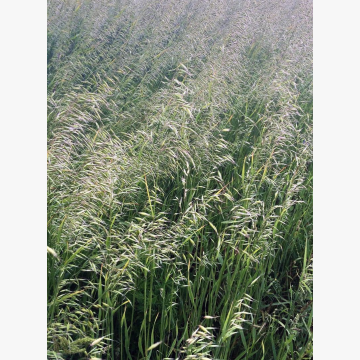- Home
- Seeds
- Catch/Cover crops
- Plants for catch/cover crops
- Bristle oat IAPAR 61
FOR CONSULTATIONS APPLY TO:
Commercial director
Lina Smalskienė
tel. +370 618 02 551
e-mail linak@agrolitpa.lt
Sales manager
Tautvydas Kliučininkas
tel. +370 681 35 093
e-mail tautvydask@agrolitpa.lt
Sales manager
Eglė Petkevičienė
tel. +370 626 95 458
e-mail eglep@agrolitpa.lt
Sales manager
Kotryna Nakrošytė
tel.: +370 601 39 282
e-mail kotryna@agrolitpa.lt
Bristle oat IAPAR 61
A late diploid bristle oat suitable for feed, green manure, and bioethanol production
- Vigorous and productive
- Resistant and healthy
- Suitable for all types of soil and rotations
- Its allelopathic, biocidal effect (rust, fusarium, etc.) and its resistance to pests (aphids, nematodes) make it a species dedicated to breaking cycles
- Vigorous, rapid initial growth
- High productivity
- Resistant and healthy
- Perfectly establishes
- Covers the soil surface well, suppresses weeds
- Dense root system
- Moderately resistant to drought
- 1000 grain weight – 16 g
- Grains – white
- C/N ratio: high (25-30)
- Share of mineralizable N: 24 %
- Sensitive to -7 °C frost during flowering
- Has allelopathic properties
- Acts as a biocide against fusarium wilt and rust pathogens
- Resistant to nematodes
- Resistance to rust – good
- Recommended in crop rotation when growing soybeans, sunflowers, beets, legumes
- A longer growing season allows for longer grazing
- Grazing can be started 45-60 days after sowing (when the plants reach a height of 30 cm)
- Suitable in mixtures with Egyptian, red clover, for better forage quality
- Protein content – 14 %
- Vegetation period – 134 days
- Dry mass yield (for fodder cultivation) – 4.581 t/ha
- Dry mass yield (when growing green manure) – 8.359 t/ha
- Plant height – 145-155 cm
- 1000 grain weight – 15 g
- Seed yield potential – 1200 kg/ha
- Moderately resistant to crown rust
- Moderately resistant to stem rust
*According to research conducted in Brazil, published by Scheffer-Basso in 2002
Note: It is not recommended to sow cereals after oats, because oats can suppress the growth of cereals due to allelopathic action, nitrogen accumulation from the soil and decomposition products (phytotoxic acids). There should be no problems when sowing beans following bristle oat.
The varietal parameters may differ from those indicated here when the testing circumstances differ from quondam
Recommended sowing rate when growing for nematode control: 80-120 kg/ha
Recommended sowing rate when growing for erosion control/as covering crop: 25-50 kg/ha
Recommended sowing rate when growing for green biomass / green manure: 50-125 kg/ha
Keravos sreet. 17, Kerava,
LT-38 131 Panevėžys district, LITHUANIA
Enterprise's code 168598128
VAT code LT685981219
Tel. +370 615 11 315
E. mail info@agrolitpa.lt




.JPG)

